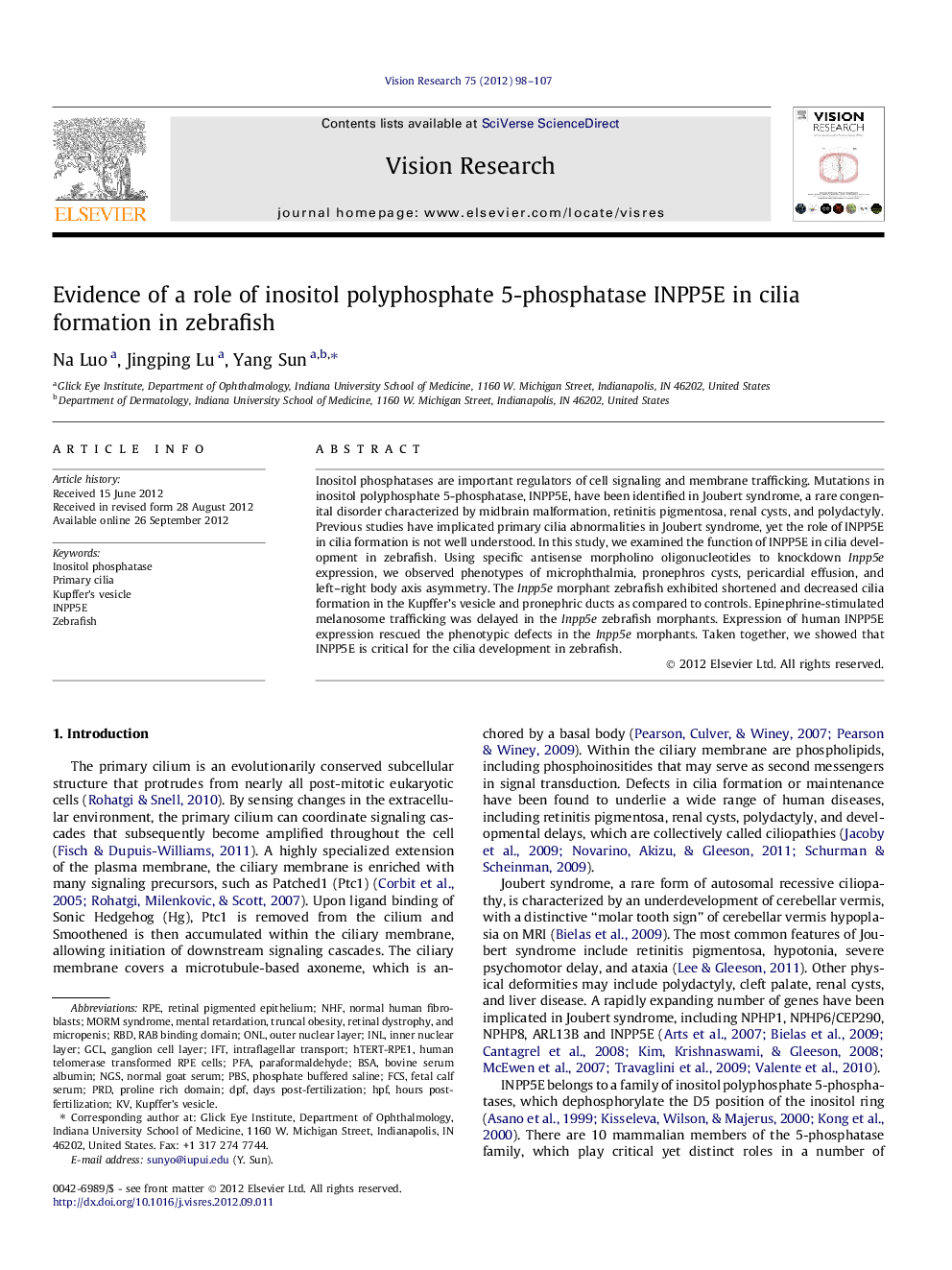| Article ID | Journal | Published Year | Pages | File Type |
|---|---|---|---|---|
| 4033875 | Vision Research | 2012 | 10 Pages |
Inositol phosphatases are important regulators of cell signaling and membrane trafficking. Mutations in inositol polyphosphate 5-phosphatase, INPP5E, have been identified in Joubert syndrome, a rare congenital disorder characterized by midbrain malformation, retinitis pigmentosa, renal cysts, and polydactyly. Previous studies have implicated primary cilia abnormalities in Joubert syndrome, yet the role of INPP5E in cilia formation is not well understood. In this study, we examined the function of INPP5E in cilia development in zebrafish. Using specific antisense morpholino oligonucleotides to knockdown Inpp5e expression, we observed phenotypes of microphthalmia, pronephros cysts, pericardial effusion, and left–right body axis asymmetry. The Inpp5e morphant zebrafish exhibited shortened and decreased cilia formation in the Kupffer’s vesicle and pronephric ducts as compared to controls. Epinephrine-stimulated melanosome trafficking was delayed in the Inpp5e zebrafish morphants. Expression of human INPP5E expression rescued the phenotypic defects in the Inpp5e morphants. Taken together, we showed that INPP5E is critical for the cilia development in zebrafish.
Graphical abstractFigure optionsDownload full-size imageDownload high-quality image (26 K)Download as PowerPoint slideHighlights► We present a knockdown zebrafish model for inositol 5-phosphatase INPP5E. ► Morphants defects of cilia in Kupffer’s vesicle and pronephros ducts. ► Wildtype human INPP5E can rescue the defect in zebrafish morphants.
